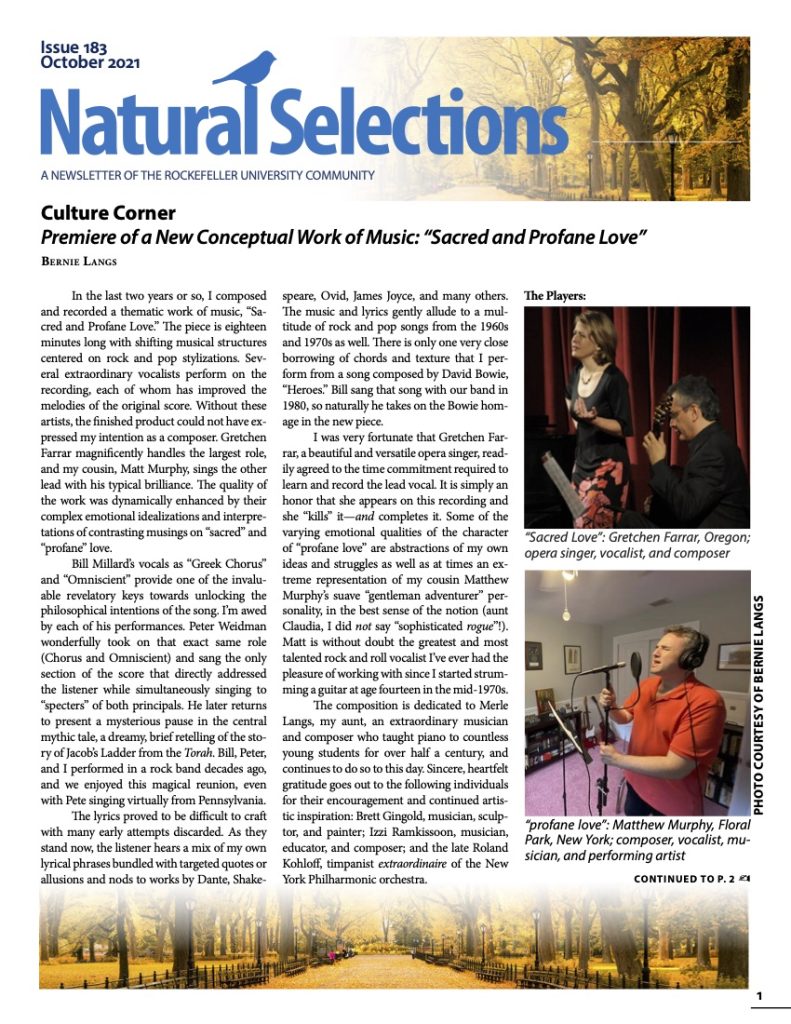Part XVIII: Robert Bruce Merrifield, 1984 Prize in Chemistry
By Joseph Luna
By the time Bruce Merrifield sat down to write in his lab notebook in May 1959, a scientific puzzle had been twirling in his head for quite some time. What he wrote next summarized a Nobel-worthy problem and offered a bold but totally unproven solution, all in three sentences. It turned out to be an impeccably succinct opening salvo, not just for a research career, but for an entire field.
“There is a need for a rapid, quantitative, automatic method for the synthesis of long chain peptides. A possible approach may be the use of chromatographic columns where the peptide is attached to the polymeric packing and added to by an activated amino acid, followed by removal of the protecting group and with repetition of the process until the desired peptide is built up. Finally the peptide must be removed from the supporting medium.”
To unpack this a bit: Merrifield spotted the need to take amino acid building blocks and string them together to form a peptide of his choosing (or if a really long peptide, a whole protein). His idea in essence was to use a solid support to get an amino acid to hold still, so that he could methodically link amino acids together sequentially. Finally, the immobilized chain of amino acids, the peptide, could be released and studied.
At a time when molecular biology was just getting off the ground, Merrifield’s understated first sentence belies a history of protein chemistry already more than half a century old, as well as his own frustration at making the small peptides he was interested in studying. After joining Wayne Wooley’s research group as a post-doc at Rockefeller in 1949, Merrifield applied his biochemistry training by isolating and characterizing “strepogenins” a catch-all term for small peptides that stimulated bacterial growth. The standard practice was to isolate these peptides from a biological source, but this approach almost always generated scholarly (aka vicious) pushback: it was very difficult to rule out contamination. If a compound could be crystalized as a means of isolating it to “purity”, most biochemist naysayers would generally be assuaged.
Chemists, however, were an entirely different breed of naysayer. They would only be convinced by chemical synthesis of a pure compound, characterized at each intermediate step as a measure of quality, and where, by definition, no biological contaminant could be introduced since no life form (other than the chemist’s hands) was required. For this reason, most biochemists weren’t really considered chemists: they merely isolated and characterized what they thought were active compounds, but they could very well be fooling themselves. Justus von Leibig’s famous chemical dictum “Tierchemie ist Schmierchemie” (Biochemistry is sloppy chemistry) stung hard for the better part of a century.
Peptide chemistry was one branch of biochemistry suited to the use of classical solution synthesis by Merrifield’s day, but it was painstaking work. For instance, making one “strepogenin” peptide composed of five amino acids (Ser-His-Leu-Val-Glu) took Merrifield 11 months, with a yield of only 7% using classical methods. Across the street at the then Cornell Medical College in 1953, Vincent du Vigneaud and coworkers stunned the scientific community by synthesizing the peptide hormone oxytocin, a full nine amino acids long. The initial yield was about 1%. Du Vigneaud won the Nobel Prize in 1955 for this work.
Seen in this light, Merrifield’s insistence on a “rapid, quantitative and automatic method” reads like a pipe dream in a world where classical peptide synthesis worked, despite monumentally poor efficiency. “Oh wouldn’t we all!” one could almost read between the lines. But what Merrifield wrote contained no trace of irony or sarcasm. He was serious, as was his proposed solution.
What he thought would take him about three months to set up, ended up taking three years. But by 1963, he had solid-phase peptide synthesis (SPSS) working. By immobilizing one amino acid on a polystyrene resin, he could sequentially add amino acids to link them in a chain. Afterwards, he could remove the finished peptide from the resin for study. In his landmark paper, published in 1963, Merrifield described the synthesis of a tetrapeptide (Leu-Ala-Gly-Val) using this new technique. It wasn’t perfect, but it was a compelling start and ripe for automation: within a few years, peptides that took years to make took days, with yields well into the double digits.
Not surprisingly, chemists initially weren’t all that impressed. Because SPSS only yielded a finished product and not the intermediates that were customarily provided to vet one’s synthesis, the method was perceived as “not chemistry at all.” Even worse, as one noted chemist summed it up, SPSS lazily represented an “ingenious trick to overcome some of the unpleasant features of the classical methods.” None of this mattered. Building on his idea, the Merrifield lab went on to perform truly heroic feats of peptide synthesis, making hormones like insulin, glucagon, and oxytocin and even entire enzymes like RNAse A (124 amino acids long!) With the construction of an automated peptide synthesizer, critiques further ebbed as it became increasingly clear that classical methods were sorely inefficient compared to SPSS. Rapid, quantitative, and automatic indeed.

